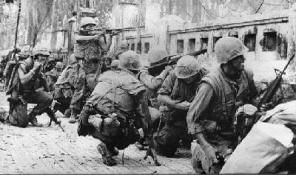I'm very glad to have found you on the web. The pin from my old unit Air Force Combat Control Pinis awesome and I'll be proud to wear it. Thank you very much.
(707) 906-3361
 On January 30, 1968, Tet Offensive began. Early in the morning, North Vietnamese troops and Viet Cong forces attacked both towns and cities in South Vietnam, breaking the ceasefire that had been called for the Vietnamese holiday of Tet (the lunar new year).
On January 30, 1968, Tet Offensive began. Early in the morning, North Vietnamese troops and Viet Cong forces attacked both towns and cities in South Vietnam, breaking the ceasefire that had been called for the Vietnamese holiday of Tet (the lunar new year).
The Communists attacked around 100 major cities and towns in South Vietnam. The size and ferocity of the attack surprised both the Americans and the South Vietnamese, but they fought back. The Communists, who had hoped for an uprising from the populous in support of their actions, met heavy resistance instead.
In some towns and cities, the Communists were repelled quickly, within hours. In others, it took weeks of fighting. In Saigon, the Communists succeeded in occupying the U.S. embassy, once thought impregnable, for eight hours before they were overtaken by U.S. soldiers. It took about two weeks for U.S. troops and South Vietnamese forces to regain control of Saigon; it took them nearly a month to retake the city of Hue.
In military terms, the United States was the victor of the Tet Offensive for the Communists did not succeed in maintaining control over any part of South Vietnam. The Communist forces also suffered very heavy losses (an estimated 45,000 killed). However, the Tet Offensive showed another side of the war to Americans, one which they did not like. The coordination, strength, and surprise instigated by the Communists led the U.S. to realize that their foe was much stronger than they had expected.